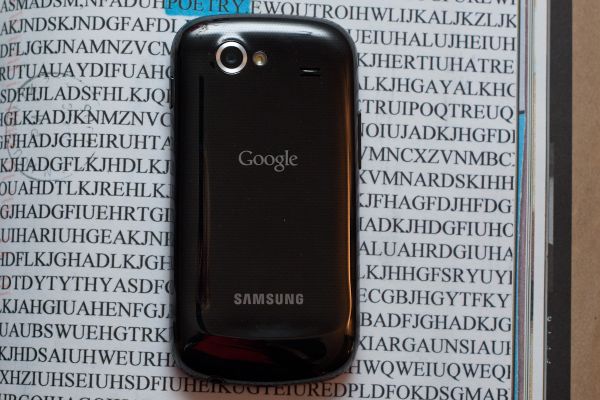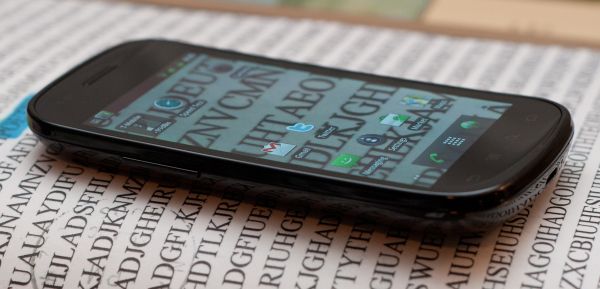Nexus S and Android 2.3 Review: Gingerbread for the Holidays
by Brian Klug on December 14, 2010 4:08 PM EST- Posted in
- Smartphones
- Samsung
- Nexus S
- Gingerbread
- Android 2.3
- Mobile
Conclusions and Final Thoughts
Right now, there's no doubt about it that the Nexus S is the best Android phone on the market, but that's almost purely a function of its status as the only Android device with Gingerbread at the moment. That isn't to say the hardware choices Google made with Samsung are bad, they're just a bit puzzling. Lacking external storage is hard to swallow for enthusiasts, even if the "USB Storage" partition works just like an SD card when connected over USB. Not having an HSPA+ baseband - even if it doesn't do much in terms of actual realizable speed at the moment, T-Mobile is already fast - is a checkbox feature that will give many pause as well. That said, the Nexus S does have notable extras that other phones lack such as the contour display and an NFC controller, but those aren't of immediate utility. NFC looks like something a number of other smartphone makers are going to get serious about supporting, and Google plans to quickly add support for P2P and card emulation modes. Using a smartphone as a hotel key, bus pass, or movie ticket sounds like something even I would've stuck firmly in the science-fiction category a decade ago, but that's what those modes will enable.
If the previous Nexus One was any indication, the real value from owning an actual google-branded phone is that you get updates first. Carriers and other vendors should take note - people want software updates, and fast. Promise quick platform updates, deliver them on the date you set, and you'll build some brand loyalty.
The Nexus name should always mean that the device is something of a rubric for other Android devices on the same software platform. It's the hardware the Android team will be carrying around when thinking about what changes to make to the platform, it's the device developers will likely use as a baseline reference design for performance and testing. Plus, it's stock Android - there's no T-Mobile branding, no HTC Sense, no carrier skins. Going forward, there's also going to be no moratorium on carrier-skinning with Gingerbread, so getting a device with pure unadulterated Android like the Nexus S really is a value-added proposition.
Going forward, I hope Google continues to make a Nexus device which represents their own pure vision of the smartphone space. The G1 served that purpose, then the Nexus One, now the Nexus S takes that role. I'm still waiting for that completely carrier-agnostic device with pentaband UMTS support and maybe some CDMA/EVDO goodness tossed in there, but that's likely a long ways off.
 Photo courtesy Sarah Trainor
Photo courtesy Sarah Trainor
I really feel like putting all my weight behing a total recommendation of the Nexus S would be easier were it not on T-Mobile alongside two equally competent, HSPA+ enabled, 45nm Snapdragon packing devices, namely the G2 (which also has stock Android) and the myTouch 4G. The 45nm Snapdragons with Adreno 205 GPUs have proven completely competent performers (and I'm not even finished testing the myTouch 4G yet), with Adreno 205 performing just shy of SGX 540, but worlds better than Adreno 200. If HSPA+ support really matters to you, even if it isn't the MIMO/Dual-Carrier variety that's going to make a huge difference quite yet, you're honestly better off getting one of those two phones and waiting the months (or however long it will be) before they see a Gingerbread build. If you want Gingerbread (and also awesome hardware) right now, get the Nexus S.
The other big question mark on the horizon is what dual-core SoCs from TI, Qualcomm, and NVIDIA will do to the smartphone landscape. It's possible that we'll see battery life improvements alongside another dramatic change in performance, but success all depends on how polished software, drivers, and the devices themselves are. It's a gamble for certain to wait and see what hardware will crop up at CES, but one month isn't very far away. For now however, the Nexus S is king of Android.











73 Comments
View All Comments
metafor - Wednesday, December 15, 2010 - link
That's a bit misleading. There are a few versions of the "lagfix" around and not all of them simply change the filesystem. A bunch actually turn on memory caching, which essentially uses DRAM to cache disk IO.This is what causes the gigantic jump in Quadrant scores you see. In reality, while the fileIO portion of quadrant does artificially lower the Galaxy S's end-score, it's nowhere near by the amount many who apply the patch sees.
daveloft - Wednesday, December 15, 2010 - link
I'm running 2.2 which boosted my score from 800 - 1100.I also use a lagfix to change my file system to EXT4 which boosted my score from 1100 - 1600.
It's by no means misleading. I know there's lots of other lagfixes and optimizations and custom kernels. It doesn't take away from my point that Quadrant is heavily influenced by file system and as a result of running a different file system on my Galaxy S I a significantly boost in my score.
daveloft - Wednesday, December 15, 2010 - link
The people touting their 2000 plus scores on their Galaxy S are the ones likely doing what you said. But again that comes back to my point that modifying your phone for better IO performance will make your Quadrant score significantly better and any device with really fast storage will benefit from a high Quadrant score. This will lead people to say that the Snapdagron chip is better.metafor - Thursday, December 16, 2010 - link
A lot of people make a lot of claims without isolating the chip. I remember the "A4 vs Snapdragon" and all the wild conjecture that went into that.As for the original comment, I think at least the 45nm Snapdragons are comparable, almost indistinguishable from the current gen Hummingbirds. With the exception of perhaps the FP/SIMD performance -- which no programs today use anyway.
One thing I would like to see is someone try to test these chips for power usage in isolation. A Hall-style current monitor and an integrating voltage monitor should be sufficient to know just how much power these chips use. Of course that means taking the device apart and still have it operating.
zorxd - Tuesday, December 14, 2010 - link
Works just fine here with android 2.2. WPA2+PEAP+MSchapv2Brian Klug - Tuesday, December 14, 2010 - link
So I think the story with the Nexus One was that it was working in 2.2, but disappeared in 2.2.1. I know that for some months now I've been unable to authenticate with that same network with the Nexus One.Some of the other devices have better WPA supplicants too I guess.
-Brian
Shadowmaster625 - Tuesday, December 14, 2010 - link
If you phone is laying on a book, the camera lens is about 3 mm away from the page and the viewing angle is about 3 of those letters. Not to mention there is no light getting under there. So how can the screen be showing all those characters?Brian Klug - Tuesday, December 14, 2010 - link
Oh so when I took that photo, I was worried someone would be misled, apologies, didn't mean to confuse. I just took a photo a few inches from the page, then set it as the wallpaper, then snapped the picture.What's being shown isn't camera input. ;)
-Brian
sabrewulf - Tuesday, December 14, 2010 - link
"Things like scrollback and sending cursor commands in connectbot (arguably Android’s best SSH application) simply require having some directional controls - there’s no virtual keyboard with arrow keys. "Using the Swype keyboard, if you swype from the swype button to the sym button and release, you are given a virtual keyboard with arrow keys, pgup/dn, home/end, and a few other functions.
Brian Klug - Tuesday, December 14, 2010 - link
Oh wow, I totally missed that in Swype. Awesome tip!-Brian